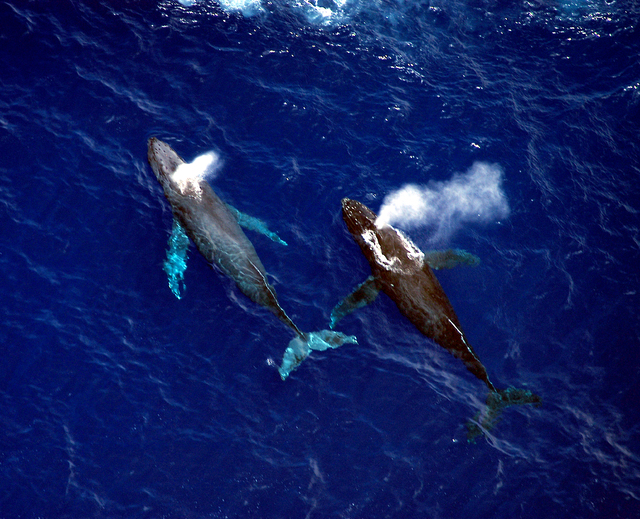KAILUA-KONA — Been looking in vain for the flash of flukes and the awe-inspiring breach of the humpback whale? ADVERTISING KAILUA-KONA — Been looking in vain for the flash of flukes and the awe-inspiring breach of the humpback whale? It’s
KAILUA-KONA — Been looking in vain for the flash of flukes and the awe-inspiring breach of the humpback whale?
It’s not your eyes, and you’re not the only one. The giants really are late this year.
“Even though there are no formal surveys in December, the numbers clearly are down,” said Ed Lyman, a Maui-based
resource protection manager and response coordinator for the Hawaiian Islands Humpback Whales National Marine Sanctuary.
“What I’m seeing out there right now I would have expected a month ago,” Lyman said. “We’ve just seen a handful of whales.”
Lyman took part in a response to a distressed calf that had been separated from its mother on Christmas Eve. On the 12-14 mile run to the scene, he did not spot a single whale until he got close to the calf, which was unusual, he said.
Humpback whale season from December through March is eagerly awaited in Hawaii. Besides being a signature part of the winter experience in the islands, the whales are also a significant source of income for tour operators.
The sanctuary sponsors annual whale counts, but those aren’t held until the last Saturday of January, February and March. So it’s tough to get a firm grasp right now on how many animals should be here, or how many may be missing, said Jeff Walters, who has served as the sanctuary’s co-manager.
“They don’t necessarily show up in the same place at the same time every year,” Walters said.
Instead, sanctuary officials have to rely on their own observations and reports from tour operators and others who spend time on and over the water.
Brian Powers, a Kailua-Kona aerial photographer who has spent years capturing images of humpbacks from the air, can be counted among those waiting.
“I’ve been looking for the last month and have not seen one,” he said.
This time of year, cars are usually lined up on the edge of the Akoni Pule Highway as whale watchers gather roadside and on hills to take in the nearshore displays of pec slapping, blows and the giant, lunging breaches of aggressive and amorous males. Each winter, more than 10,000 humpback whales migrate from feeding grounds in Alaska to the warm waters off Hawaii to mate and give birth.
The first humpback of the season was spotted off the Kohala coast in late October, which is early. Sightings have been spotty since then, and the increase in numbers leading up to the January and February peak months may be starting to happen only now.
Nick Craig of Waikoloa-based Hawaii Ocean Sports said the first part of the month had five trips with no whales and several excursions where only a few were spotted.
In the last few days, though, “we seem to be back to eight to 10 whales per trip,” he said.
There are a number of theories why the humpbacks are late, but no one knows for sure, Lyman said. The warm waters associated with the current El Nino may have disrupted feeding patterns in the north, causing the whales to linger longer before heading south, he said.
It’s also possible that rebounding whale populations have increased competition for food, making it necessary for them to stay longer in the frigid feeding grounds to the north to gain the energy reserves for the migration. The whales do not feed on the southern end of their trip through the Pacific.
“They also may not stay here as long, especially the males,” Lyman said. “They may not have energy reserves.”



